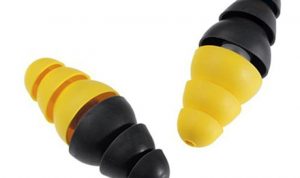
Documents unsealed by a Florida court confirm that 3M officials not only knew that their Combat Arms earplugs (CAEv2) were defective, but they withheld that information from both the military and from soldiers whose hearing was damaged as a result.
This information may be particularly damning for the company in light of more than 150,000 lawsuits filed through multidistrict litigation (MDL) by service members who say they suffered long-term problems, including hearing loss, difficulty understanding conversations, and ringing or buzzing in their ears due to the products’ failure.
Judge M. Casey Rodgers of the U.S. District Court for the Northern District of Florida made hundreds of documents available April 20, 2020, including depositions, memos, emails, and receipts dating from 2013 until 2018.
The primary issue with the two-sided earplugs is that they could move and become imperceptibly dislodged from their position in the ear canal, significantly reducing the amount of protection they provided. The unsealed evidence shows that 3M knew of the problem and discovered an insertion method — folding back the flanges of the opposite end of the plugs — that helped to achieve greater noise reduction.
Among the evidence released is a 3M internal memo that acknowledged: “… the existing product has problems unless the user instructions are revised.” Yet 3M did not modify insertion instructions or take steps to train military members on how to properly use the earplugs to protect their hearing.
Timothy McNamara, 3M’s sales manager for the U.S. Midwest, said in his deposition that he visited military bases frequently, but never shared with military members that there was a safer way to use the earplugs, or that there were any potential problems.
McNamara was asked if he thought soldiers should know that 3M used different methods to test the earplugs than how soldiers were instructed to use them. McNamara answered, “I don’t believe so.”
Additionally, 3M modified the design of the earplugs, shortening them to fit inside carrying cases. An internal email states that 3M has “no data” — no testing for safety or efficacy — on the shortened version. Soldiers continued to use the earplugs under the assumption that they were effective, yet even the company had no proof that they were.
3M Put Profits over People
3M made a tremendous amount of money from selling Combat Arms earplugs to the military. Unsealed documents show that the devices accounted for 5% of 3M’s revenue within its U.S. hearing protection business, and paid for 20% of its operating income. Each set of earplugs cost the company 85 cents to make, and they were able to sell them to the military at a cost of $7.63 per pair.
While 3M continued to make huge profits by selling them to the Department of Defense, military members were noticing that weapons training and military missions were taking a toll on their hearing. According to the Hearing Health Foundation, nearly 1.2 million veterans received compensation for hearing loss in 2017, and nearly 1.8 million veterans were compensated for tinnitus, or ringing in the ears. Hearing problems are the single-most common military disability complaint paid for by the military today.
Can 3M be Sued for Faulty Combat Arms Earplugs?
3M is claiming immunity from lawsuits because it was acting as a government contractor. In most cases, companies under government contract cannot be sued for faulty products. However, in this case, the Department of Justice says 3M sold Combat Arms earplugs that were not up to their agreed-upon standards.
3M has already settled with the Department of Justice in a related lawsuit for $9.1 million for defrauding the military. However, none of that settlement money was allocated to compensate the military men and women who suffered long-term effects, such as hearing loss, ringing of the ears, and other injuries that many will struggle with for the rest of their lives.
The decision as to whether or not active and former military members can sue 3M for their injuries will be decided by Judge Rodgers in the coming weeks or months. Plaintiffs’ attorneys feel confident that, because 3M has already all but admitted liability in the federal settlement, the cases will move forward.
3M Combat Arms Lawsuits
To-date, more than 150,000 civil suits have been filed by service members who suffered injuries between 2013 and 2018. CAEv2 earplugs were standard issue between 2013 and 2015, but continued to be used for years.
The number of claims against 3M and Aero Technologies, a subsidiary, have continued to rise as more current and former military members have learned that 3M knowingly sold faulty earplugs, and that it put profits over the quality of their lives.
The first bellwether case is expected to go to trial before Judge Rodgers in summer 2021, and some legal experts predict this MDL may be the single largest litigation of its type in history. The lawsuits will likely take several years to
Are You Eligible to File a 3M Claim?
If you are a former or current service member who used 3M Combat Arms CAEv2 earplugs between 2013 and 2018 and experienced hearing loss, hearing damage, or tinnitus, you may be eligible for compensation.
OnderLaw is standing up for service members and their rights. We have a strong record of not only winning cases, but in making sure settlements are fair and adequate for our clients. We have recovered more than $3 billion in damages for people just like you, and we will fight for you, regardless of where in the United States you reside.
Contact OnderLaw now for a free, no-obligation consultation. We don’t get paid until you win your case.






